The University of Colombo is a public research university located primarily in Colombo, Sri Lanka. It is the oldest institution of modern higher education in Sri Lanka. Specialised in the fields of natural, social, and applied sciences as well as mathematics, computer sciences, and law. It is ranked among the top 10 universities in South Asia.

The University of Kelaniya(Sinhala: කැලණිය විශ්වවිද්යාලය, Tamil: களனி பல்கலைக்கழகம், abbreviated UoK) is a state university in Sri Lanka. Just outside the municipal limits of Colombo, in the city of Kelaniya, the university has two major institutions and seven faculties.
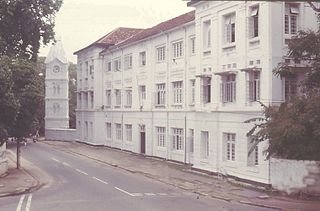
Ceylon Medical College was a public medical school in Ceylon. The college was established in 1870 as the Colombo Medical School. The college was based in Colombo. The college was merged with Ceylon University College in 1942 to form the University of Ceylon. The medical college became the university's faculty of medicine. The college was also known as Colombo Medical College.

The University of Peradeniya is a public university in Sri Lanka, funded by the University Grants Commission. It is the largest university in Sri Lanka, which was originally established as the University of Ceylon in 1942. The university was officially opened on 20 April 1954, in the presence of Queen Elizabeth II, by Prince Philip, Duke of Edinburgh.
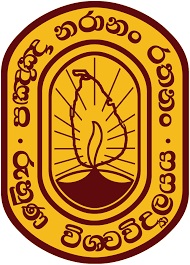
The University of Ruhuna is a public university in Matara, Sri Lanka.
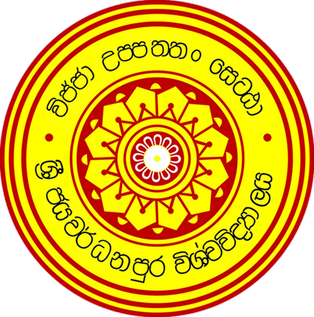
The University of Sri Jayewardenepura is a public university in Sri Lanka. It is in Gangodawila, Nugegoda, near Sri Jayewardenepura Kotte, the capital city. It was formed in 1958 out of the Vidyodaya Pirivena, a Buddhist educational centre that was founded in 1873 by Ven. Hikkaduwe Sri Sumangala Thera.
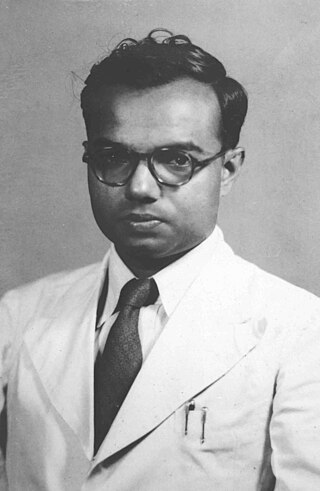
Mapatunage James "M. J." Perera was a Sri Lankan civil servant with nine members in his family in Udumulla, Padukka. He created broadcasting history by being the first Ceylonese Director General of Radio Ceylon, the oldest radio station in South Asia, taking over the helm from John Lampson of the BBC.
The University of Sri Lanka was the public university system of Sri Lanka from 1972 to 1978.

Charles Henry de Soysa Dharmagunawardana Vipula Jayasuriya Karunaratna Disanayaka popularly known as Charles Henry de Soysa, JP was a Ceylonese entrepreneur and philanthropist. He was a pioneering planter, industrialist and was the wealthiest Ceylonese of the 19th century. He was instrumental in the establishment of the first Ceylonese bank, the Moratuwa carpenters guild, the Ceylon Agricultural and National Associations. He is widely regarded as the greatest philanthropist of the island for contributions which includes the De Soysa Maternity Hospital, the Prince and Princess of Wales Colleges, the Model Farm Experimental Station and many other institutions and acts of charity, establishing infant-maternal healthcare and secular education for girls in the country. He would have been the island's first Knight Bachelor, but having died prior, his widow was given the rare honor of the use of the style and dignity of wife of the Knight Bachelor and was known as Catherine, Lady de Soysa.
The Sri Lanka University Games are a multi-sporting event held between public universities in Sri Lanka.

Sir James Peiris was a prominent leader in the Sri Lankan independence movement, the first elected Vice-President of the Legislative Council of Ceylon and the first native Governor of Ceylon (Acting).

Sir Don Baron Jayatilaka, KBE known as D.B. Jayatilaka was a Sri Lankan Sinhalese educationalist, statesmen and diplomat. He was Vice-President of the Legislative Council of Ceylon; the Minister for Home Affairs and Leader of the House of the State Council of Ceylon; and Representative of Government of Ceylon in New Delhi. Sir D. B. Jayatilaka is also considered as a flag bearer of Buddhist education in Sri Lanka.

The Faculty of Engineering, University of Peradeniya is one of the eight academic faculties at the university. It is the oldest engineering faculty in Sri Lanka. It offers full-time Undergraduate Courses leading to the degree of Bachelor of Science of engineering (B.Sc.Eng.), and several postgraduate degrees.
The University of Peradeniya library is a centrally administered network of libraries in the University of Peradeniya, Sri Lanka. It is considered the oldest academic library in Sri Lanka and one of the largest libraries in Sri Lanka today.
University of Colombo library is a centrally administered network of libraries in University of Colombo, Sri Lanka. It is home to one of the largest and oldest collections in Sri Lanka, with its roots dating back to 1870 with the establishment of the library of the Ceylon Medical College.

Ceylon University College was a public university college in Ceylon. Established in 1921, it was Ceylon's first attempt at university education. The college didn't award degrees under its own name but prepared students to sit the University of London's external examination. The college was based in Colombo. The college was merged with Ceylon Medical College in 1942 to form the University of Ceylon. The college was also known as University College, Ceylon; University College, Colombo; and Colombo University College. Its buildings and grounds are now occupied by the University of Colombo which is considered its successor.
The University of Colombo currently has seven faculties with 41 academic departments and two interdependent schools with five academic departments. All faculties and schools carries out courses of study and research in both graduate and undergraduate studies. In addition, the university has several institutions that specialize in different areas of research.
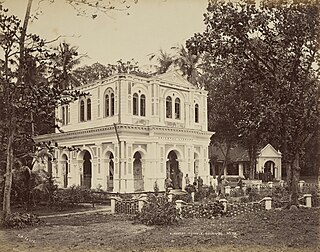
The Vidyodaya Pirivena was one of the prominent piriven in Sri Lanka. It was founded in 1873 by Ven. Hikkaduwe Sri Sumangala Thera and later in 1959, the pirivena was granted the university status by the Government of Sri Lanka.
Higher education in Sri Lanka is an optional final stage of formal learning following secondary education. Higher education, also referred to as tertiary education occurs most commonly universities or degree-granting institutions. These may be public universities, public and private degree-granting institutions which award their own degrees or degrees from foreign universities. High visibility issues include limited capacity of public universities to cater for the demand and opposition to private universities from certain segments.












